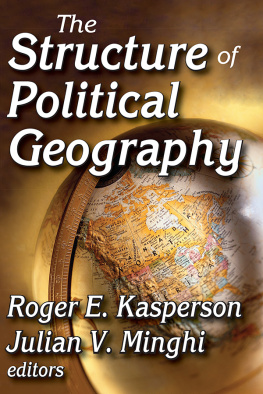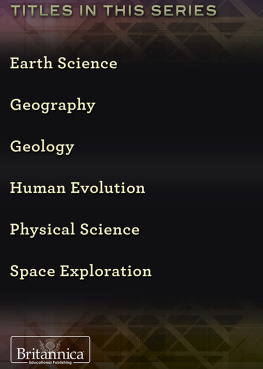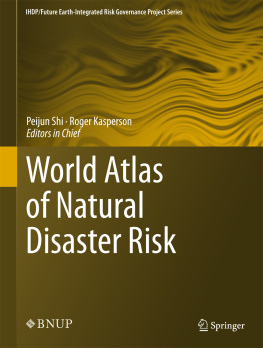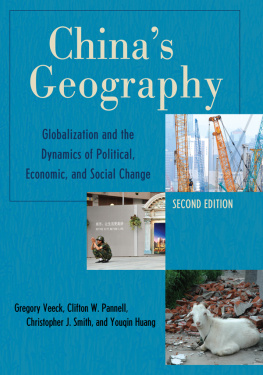The
Structure
of Political
Geography
The
Structure
of Political
Geography
Roger E. Kasperson
Julian V. Minghi
editors
First published 1969 by Transaction Publishers
Published 2017 by Routledge
2 Park Square, Milton Park, Abingdon, Oxon OX14 4RN
711 Third Avenue, New York, NY 10017, USA
Routledge is an imprint of the Taylor & Francis Group, an informa business
Copyright 1969 by Roger E. Kasperson and Julian V. Minghi.
All rights reserved. No part of this book may be reprinted or reproduced or utilised in any form or by any electronic, mechanical, or other means, now known or hereafter invented, including photocopying and recording, or in any information storage or retrieval system, without permission in writing from the publishers.
Notice:
Product or corporate names may be trademarks or registered trademarks, and are used only for identification and explanation without intent to infringe.
Library of Congress Catalog Number: 2011003509
Library of Congress Cataloging-in-Publication Data
The structure of political geography / Roger E. Kasperson and Julian V. Minghi, editors.
p. cm.
ISBN 978-1-4128-1854-4
1. Political geography. I. Kasperson, Roger E. II. Minghi, Julian V. (Julian Vincent), 1933-
JC319.K34 2011
320.12--dc22
2011003509
ISBN 13: 978-1-4128-1854-4
Contents
Transfer of Sovereignty
Growth and Development
27. Two Cognitive Maps :
(a) A New Yorkers Idea of the United States of America
(b) A Map of Derogatory Images
Appendix: Aids to Research in Political Geography,
Jeanne X. Kasperson
The original idea for this project arose in late 1966. While the editors were both involved in an NDEA Institute in Advanced Political Geography at Clark University in the Summer of 1967, the volume was given concrete form, although work was not begun in earnest until the latter part of 1967. From the start, the editors had some basic goals in mind. There was a need for a volume to assess the field of political geography, to provide a clear sense of focus and purpose, to suggest a coherent conceptual structure for the field, and to attempt to integrate political geography with the development of the discipline of geography as a whole and with the social sciences generally.
The introductory essays and the selections which follow them will serve to indicate the editors philosophy concerning the nature of this development and innovation. The interdisciplinary nature of political geography is underscored in that sixteen of the forty selections are by non-geographers. Some balance between theoretical and substantive works has been attempted. Selections are drawn from a wide range of related fields, including animal sociology, history, international relations, political economy, political science, social psychology, and sociology. The editors made their selections only after they had firmly established the conceptual structure of the volume. The classics in the field, although several are reproduced elsewhere, are, of course, an essential inclusion since the book would be incomplete without them. On the other hand, the editors have given preference to contributions never before printed, difficult to find, or not generally known or included in courses. In the same vein, given two equally valuable items, the one more readily available in other sources (e.g. Bobbs-Merrill Reprints, other readers) has been de-emphasized. Inevitably, length restrictions caused many useful items to be omitted. The selections included here have sometimes been edited both in text and in footnotes, and the reader might therefore wish to refer to the original publication for fuller treatment. While one can always debate the particular mix of inclusions and omissions, surely the selections in the present volume will be useful and pertinent to political geographers of diverse persuasion and to other social scientists interested in geographical approaches.
The editors wish to make the following acknowledgments : For initial and constant encouragement and advice, Alexander J. Morin and Norton Ginsburg; for generous help in suggesting improvements in the essays, Richard Copley, Peter Goheen, Roger Leigh, Judy Mehan, Gerard Rushton, and James Simmons; for help in organization and research, Rod Logan and Linda McKim; for typing assistance, Timmie Gayton, Janet Lawson, Erna Lay, and Petra LeBrn. The editors are particularly indebted to many of the contributors in this volume for their fine cooperation in writing translations, in updating articles by the addition of postscripts, or even by writing entirely new manuscripts without benefits other than those of a purely scholarly nature. In particular, thanks are due to Ronald Bolin for his translation of Ratzel, to J. R. V. Prescott for his original article on electoral geography, and to David Lowenthal for the addition of a postscript.
Last but not least the editors thank their rather short but often hectic period which wives for their help and patience during the marked the assembly of this volume.
R.E.K.
J.V.M.
With characteristic candor, Carl Sauer once branded political geography as the wayward child of the geographical sciences. Whatever its filial status, this subfield has in the past boasted some of the most renowned of academic geographers and has contributed notably to the emergence of scientific geography during the past century. Even four decades later, however, Sauers assessment does suggest the often peripheral position of contemporary political geography in research and pedagogy both in geography and in the social sciences generally. A number of factors have contributed to the decline of political geography. Certainly geopolitics, environmentalism, loose speculation on world power distributions, and synoptic and descriptive studies of the form of states have all taken their toll. A corresponding concern with theory, rigorous hypothesis formulation and testing, and comparative analysis has always been present but is only now emerging strongly. Considerable confusion still exists as to the objectives, conceptual structure, and scope of political geography. Clearly the time is ripe for rethinking the basic issues and formulating a clear focus and organization for the field.
The task of reconsideration may begin with a look at the changing definition of political geography. Reviewing the development of the field in 1935, Richard Hartshorne defined political geography as the study of the state as a characteristic of areas in relation to the other characteristics of areas.
The definition proposed in this volume is the study of the spatial and areal structures and interactions between political processes and systems, or simply, the spatial analysis of political phenomena. This definition is sufficiently broad to comprehend the pluralistic nature of the field and to involve political geography in the mainstream of current social science theory and research. The emphasis on inclusiveness rather than exclusiveness draws attention to the important interdisciplinary contributions originating at the peripheries of the field or even outside the discipline completely.
The present volume has several aims. First, it seeks to provide a sense of purpose and order to the study of political geography. The editors directed much effort to devising a conceptual structure for the field so that an important aspect of the book resides there. Both the organization of and lengthy introductions to each part hopefully will contribute to this end. Second, the volume attempts to bring political geography more into line with trends in contemporary geography as a whole and with the other social sciences. Not only do the selections contain a wide variety of contributions from other fields, but the introductory essays and annotated bibliographies suggest other closely related research, the study of which is a prerequisite for competence in political geography. Moreover, the organizing structure of the book enjoys close parallels in the other social sciences. Third, the editors have tried to produce a balanced book. While the emphasis is on theoretical contributions, substantive works to illustrate the applications of theory are also included. The volume also aspires to be a stocktaking as of 1969, emphasizing particularly valuable past contributions, related interdisciplinary efforts, and profitable new approaches and lines of inquiry. In this respect, the editors have included lengthy annotated bibliographies and a special appendix reviewing research aids in the field, which should help meet the requirements both of undergraduate and graduate students, and which may also be of assistance to their peers.











